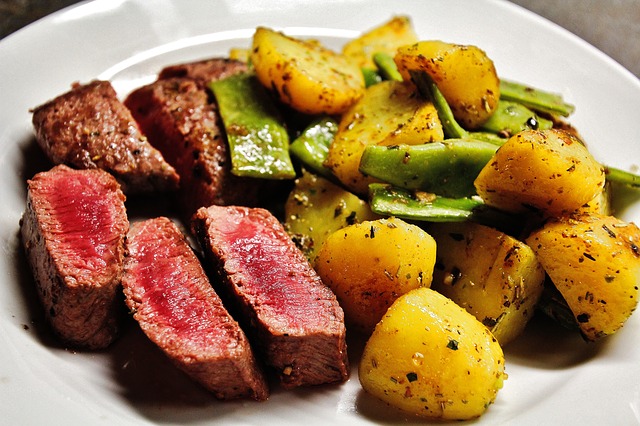Introduction
Sirloin steak is a popular cut of beef known for its tenderness and rich flavor. Many people enjoy incorporating sirloin steak into their diets due to its high protein content. In this article, we will explore the amount of protein found in sirloin steak and its significance in a balanced diet.
Protein Content in Sirloin Steak
Sirloin steak is a great source of protein, which is an essential macronutrient that plays a crucial role in various bodily functions. Protein is necessary for the growth, repair, and maintenance of tissues, as well as the production of enzymes and hormones.
The protein content in sirloin steak can vary depending on several factors, including the size of the steak and the specific cut. On average, a 3-ounce (85-gram) serving of cooked sirloin steak contains approximately 26 grams of protein. This accounts for around 52% of the recommended daily intake of protein for an average adult.
It is important to note that the protein content may differ slightly depending on the cooking method. Grilling or broiling the steak helps retain more protein compared to other cooking methods that involve excessive oil or breading.
Benefits of Protein in Sirloin Steak
Including sirloin steak in your diet can provide numerous benefits due to its high protein content. Here are some of the advantages:
1. Muscle Growth and Repair: Protein is essential for building and repairing muscles. Consuming sirloin steak, along with regular exercise, can support muscle growth and recovery.
2. Satiety and Weight Management: Protein-rich foods like sirloin steak can help increase feelings of fullness and reduce appetite. This can be beneficial for weight management by preventing overeating and promoting a healthy metabolism.
3. Nutrient Density: Sirloin steak is not only a good source of protein but also provides essential vitamins and minerals such as iron, zinc, and vitamin B12. These nutrients are important for various bodily functions, including energy production and immune system support.
4. Blood Sugar Control: Protein can help regulate blood sugar levels by slowing down the absorption of carbohydrates. Including sirloin steak in a balanced meal can contribute to better blood sugar control, especially for individuals with diabetes or insulin resistance.
Considerations and Precautions
While sirloin steak can be a nutritious addition to a balanced diet, it is important to consider a few factors:
1. Portion Size: Moderation is key when consuming sirloin steak. While it is a good source of protein, excessive consumption can lead to an imbalance in other nutrients and potentially contribute to health issues.
2. Cooking Methods: Opt for healthier cooking methods such as grilling, broiling, or baking to retain the nutritional value of the steak. Avoid excessive oil or breading, which can add unnecessary calories and unhealthy fats.
3. Overall Diet: It is important to maintain a well-rounded diet that includes a variety of protein sources, such as lean meats, poultry, fish, legumes, and dairy products. This ensures a diverse intake of essential amino acids and other nutrients.
Conclusion
Sirloin steak is a delicious and protein-rich cut of beef that can be a valuable addition to a balanced diet. With its high protein content and various benefits, including muscle growth, weight management, and nutrient density, sirloin steak offers a nutritious option for those looking to meet their protein needs. However, it is important to consume it in moderation and consider healthy cooking methods to maximize its nutritional value.
References
– USDA FoodData Central: fdc.nal.usda.gov
– The American Journal of Clinical Nutrition: academic.oup.com/ajcn











